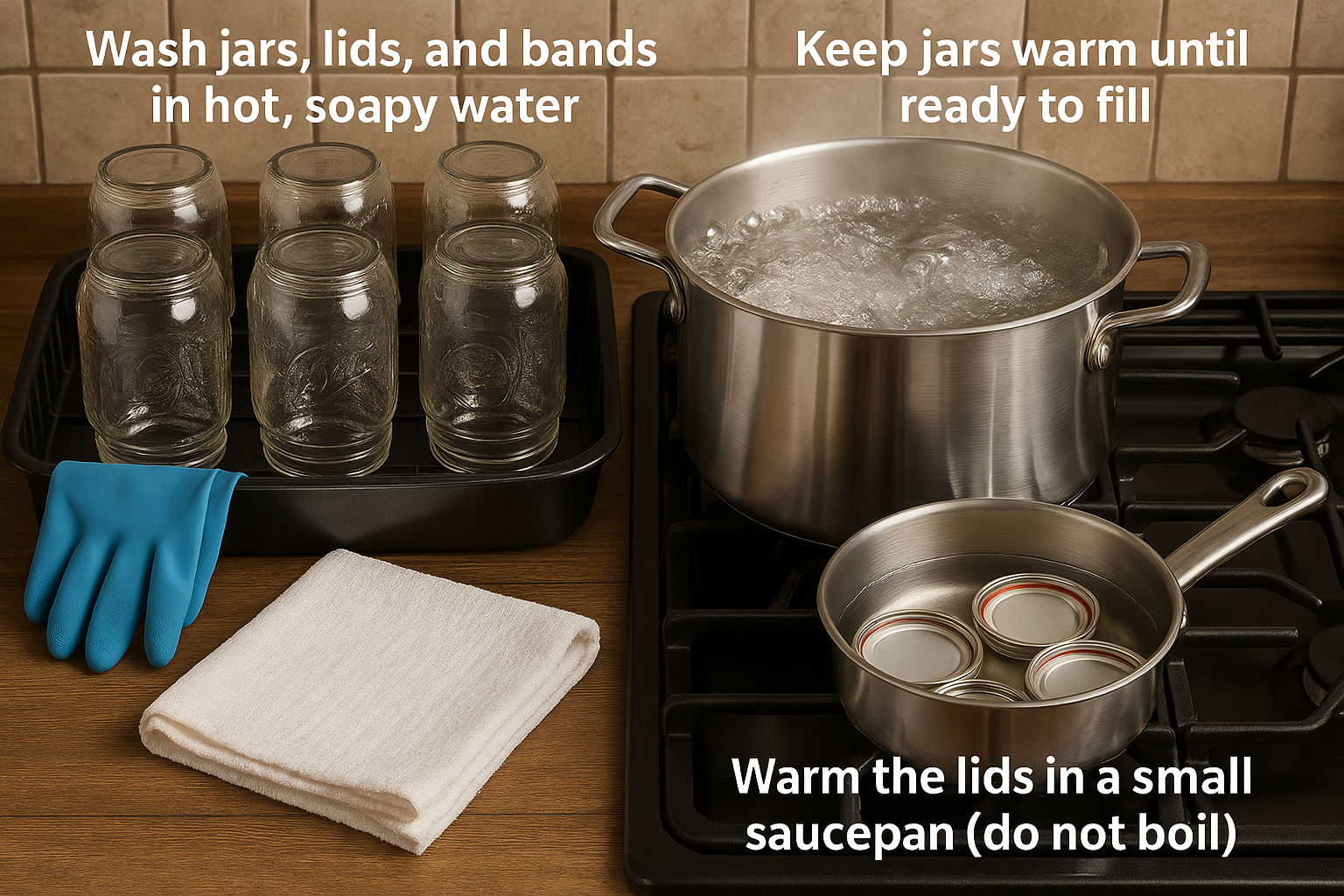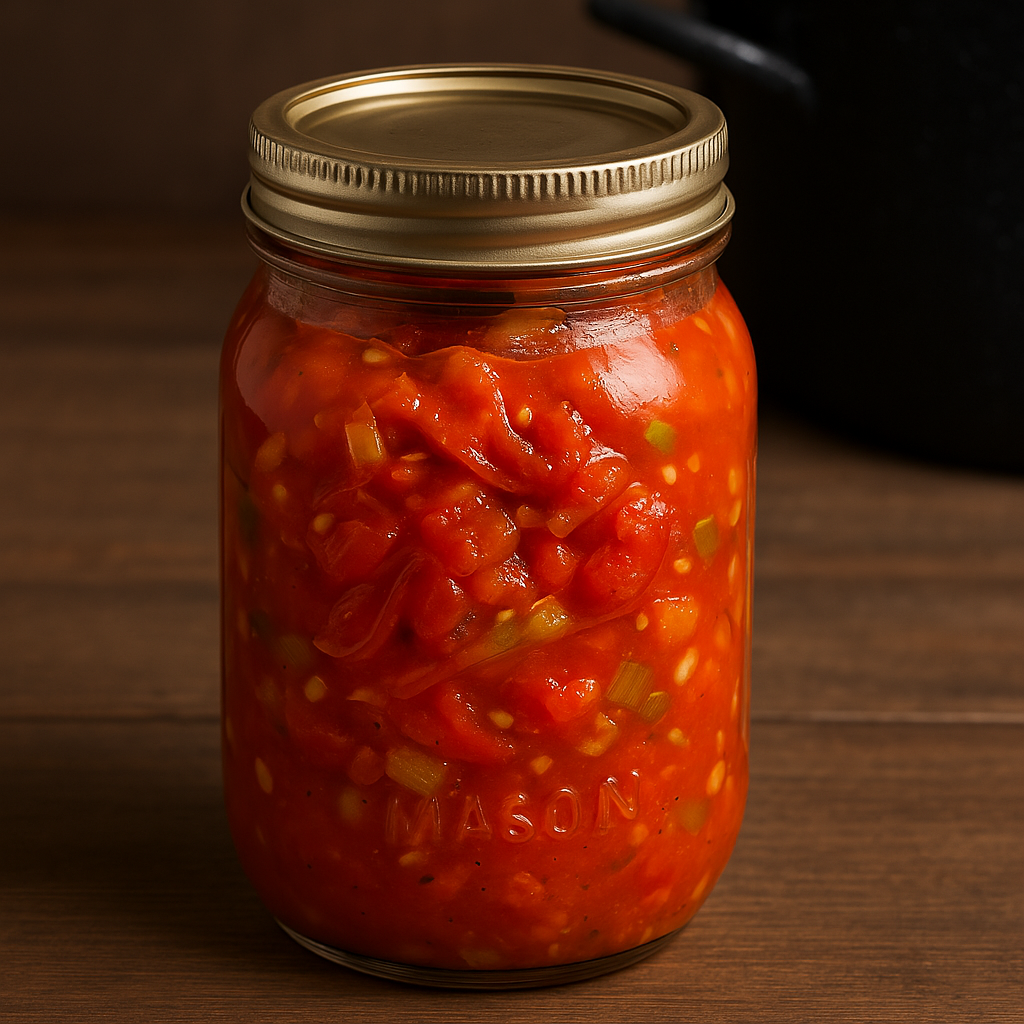Canning stewed tomatoes is a timeless kitchen tradition that allows you to preserve the vibrant flavors of summer all year round.
Whether you’re an avid gardener looking to make the most of your tomato harvest or a home cook who appreciates the convenience of ready-to-use ingredients, canning whole or, stewed tomatoes is both rewarding and practical.
In this guide, we’ll discuss everything you need to know about canning stewed tomatoes safely and successfully, from choosing the right tomatoes to sealing your jars for long-term storage.
Why Can Stewed Tomatoes?
Table of Contents

Tomatoes are one of the most versatile ingredients in any kitchen. From pasta sauces and stews to soups and casseroles, they form the base of countless delicious dishes. Canning stewed tomatoes not only extends their shelf life but also enhances their flavor as the natural sugars and acids develop over time.
Home-canned stewed tomatoes are free from preservatives and additives, making them a healthier choice than many store-bought alternatives. Additionally, you control the flavor profile—adding herbs, peppers, onions, or even a touch of sweetness to suit your personal taste.
What Are Stewed Tomatoes?

Stewed tomatoes are whole or chopped tomatoes that have been simmered with other vegetables such as onions, celery, bell peppers, and seasonings. Unlike tomato sauce or crushed tomatoes, stewed tomatoes retain more of their shape and texture, making them ideal for recipes that require chunkier tomato consistency.
Ingredients
Before you get started, gather the necessary tools:
- Canning jars (pint or quart size, with lids and bands)
- Water bath canner or large stockpot with a rack
- Jar lifter
- Canning funnel
- Ladle
- Large mixing bowls
- Sharp knife
- Large pot for blanching and cooking
- Slotted spoon
- Cutting board
- Kitchen towels
You can adjust the vegetables and seasoning to your taste, but a basic recipe includes:
- 12 pounds of fresh tomatoes (Roma or paste varieties work best)
- 1½ cups chopped onions
- 1 cup chopped celery
- 1 cup chopped green bell peppers
- Salt (optional)
- Lemon juice or citric acid (required for safe acidity levels)
Step-by-Step Guide to Canning Stewed Tomatoes
Prepare the Tomatoes

Start by selecting ripe, firm tomatoes. Avoid overripe or bruised ones, as these can affect flavor and safety.
- Wash the tomatoes thoroughly.
- Remove the skins by blanching.
- Boil water in a large pot.
- Score the bottoms of the tomatoes with a small “X.”
- Drop them into the boiling water for 30–60 seconds.
- Transfer to a bowl of ice water.
- The skins should slip off easily.
- Core and cut the tomatoes into quarters or halves, depending on size.
Prepare the Vegetables & Stew the Tomatoes
Chop the onions, celery, and bell peppers. These vegetables will add flavor and texture to your stewed tomatoes.
- In a large pot, combine the tomatoes with the chopped vegetables.
- Simmer gently for about 10 minutes, stirring frequently to avoid scorching.
- Do not overcook, as you want the tomatoes to retain their shape.
Prepare the Jars

- Wash jars, lids, and bands in hot, soapy water.
- Sterilize jars by boiling them or running them through a hot dishwasher cycle.
- Keep jars warm until ready to fill.
- Warm the lids in a small saucepan (do not boil).
Add Acid
- To ensure safe acidity levels for water bath canning, you must add lemon juice or citric acid:
- Add 2 tablespoons of bottled lemon juice or ½ teaspoon citric acid per quart jar (half for pints).
- Add it directly to the empty jar before filling with stewed tomatoes.
Fill the Jars

- Use a canning funnel to ladle the hot stewed tomato mixture into jars.
- Leave ½-inch headspace at the top.
- If desired, add 1 teaspoon of salt per quart (optional for flavor).
- Remove air bubbles using a non-metallic spatula or bubble remover tool.
- Wipe the rims with a clean, damp cloth.
- Place lids on the jars and screw on the bands until fingertip-tight.
Process the Jars
- Use a water bath canner for high-acid foods like tomatoes.
- Place jars in the canner using the rack.
- Ensure water covers the jars by at least 1 inch.
- Bring the water to a rolling boil.
- Process pints for 35 minutes and quarts for 45 minutes (adjust time for altitude as necessary).
- Turn off heat and let the jars sit in the water for 5 minutes before removing.
Cool and Store
- Carefully remove jars with a jar lifter.
- Place them on a towel-lined surface, leaving space between each jar.
- Let them cool for 12–24 hours.
Check for Seals
- The lid should not flex up and down.
- If unsealed, refrigerate and use within a few days.
- Label jars with the date and contents.
- Store in a cool, dark place for up to 12–18 months.
Troubleshooting Tips
- Are your Tomatoes floating? This is normal; solids often rise and liquids settle. Shake before using.
- Lid didn’t seal? Reprocess within 24 hours, or refrigerate and use soon.
- Discoloration or mold? Discard immediately; do not consume.
Canning Safety and Acidification
It’s critical to add acid when canning tomatoes, as their pH hovers around the safety threshold for water bath canning. Without proper acidification, there’s a risk of botulism—a potentially deadly foodborne illness. Always use bottled lemon juice (not fresh) to ensure consistent acidity.
For a more foolproof option, use a pressure canner, which doesn’t require added acid. However, many home canners find the water bath method more approachable for beginners.
Delicious Ways to Use Stewed Tomatoes
- Simmer with pasta and herbs for an easy marinara.
- Add to chili or beef stew for a rich base.
- Use in casseroles like lasagna or shepherd’s pie.
- Mix with cooked rice and spices for a hearty side dish.
- Blend with broth for a quick tomato soup.
Wrapping Up
Canning stewed tomatoes is more than just a method of preservation—it’s a satisfying, sustainable practice that connects you to generations of home cooks who relied on pantry staples year-round.
With a few simple ingredients and the right technique, you can fill your shelves with jars of summer-ready flavor that last well into winter.
Whether you’re new to canning or a seasoned preserver, stewed tomatoes are a fantastic and flexible addition to your food storage routine. Take the time, enjoy the process, and savor the rewards—one delicious jar at a time.
Leave a Reply